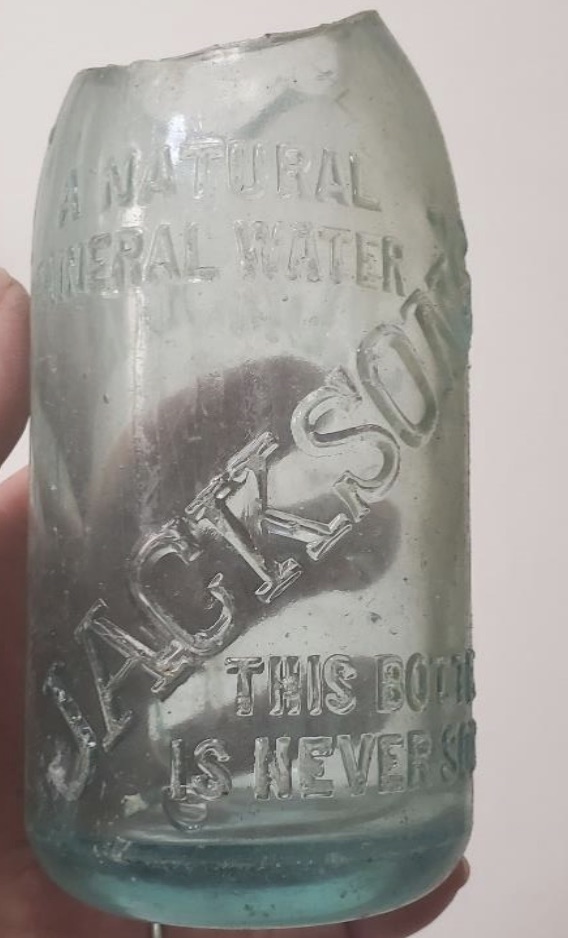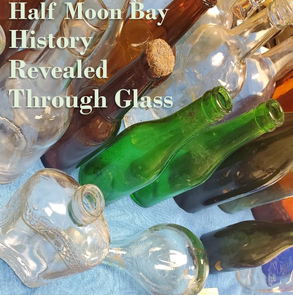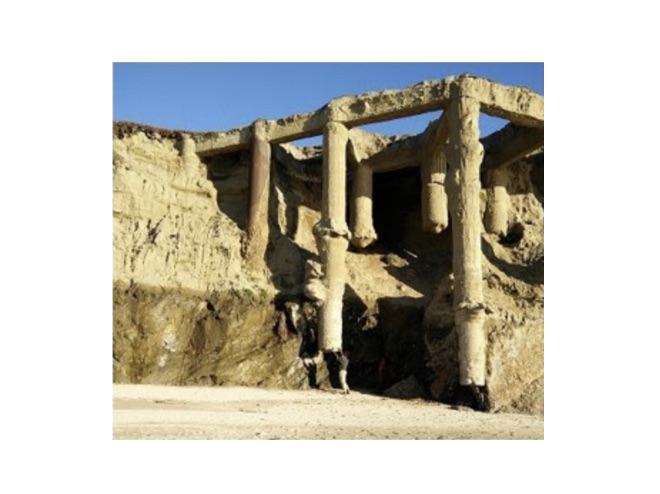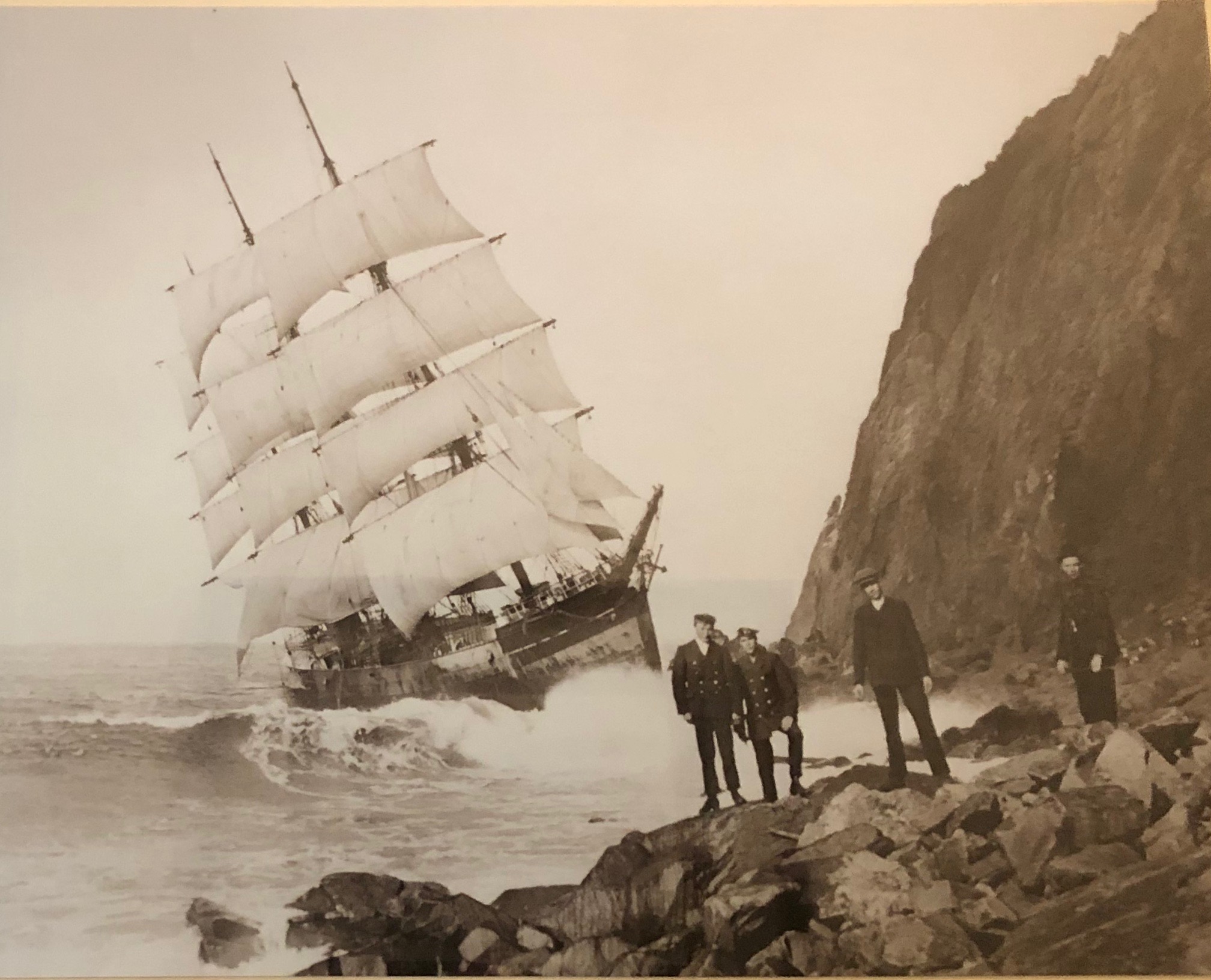|
Getting your Trinity Audio player ready...
|
PHOTO-ESSAY. Written by Jo Fry of the Half Moon Bay History Association 12/2020.
Half Moon Bay History Revealed Through Glass
Visit the Half Moon Bay Jail Museum and one of the first displays to greet you are bottles – glass in a variety of heights, shapes and colors that at first glance look no different from what you can buy today at Cunha’s. Look closer, however, and you’ll notice odd differences: advertising embossed up the side for a curious cure that the FDA would surely never approve of, glass in a blushing lavender hue, a warning not to refill, even one that can’t stand up.
Some held seltzer, others medicine, and many, keeping with our town’s history, clearly alcohol. They all have one thing in common: they tell a story. Each had a journey from the bottle manufacturer to the plant or factory that filled it, to the ship, stage, train or truck that brought it here, and finally to the person who bought it, used it and discarded it. Some of those people lived their whole lives in our town, others were just passing through. They all left behind their remnants, their trash for us to discover. From this we can learn a little of their stories. Dug up by accident during construction, washed out after a storm, uncovered in a forgotten corner of an old building, these bottles have been transformed into time capsules that reveal our coast’s past.
The earliest coastsiders
Native Americans used glass, but the glass was not manufactured, rather it was a naturally occurring result of seismic activity. Natural glass such as obsidian can be formed into tools and weapons. Not local to our coast, the nearest source of obsidian is north of San Francisco, formed as a result of volcanoes that were active over 3 million years ago.
Although archeology shows that glass bottle-making technology had been around since 1500 BC in Egypt and Mesopotamia (HistoryofGlass.com), our local tribes used grinding stones as a part of food preparation and tightly woven baskets to hold liquids and to cook.
[ Article continued ]
Basic Guide to Bottle Age Identification
Say you’re planting a new tree in your backyard, and you dig a hole deeper than you’ve had to dig before. In the hole you find a glass bottle that you didn’t put there. How can you identify the bottle? How can you tell if it is old or just a piece of modern recycling that the previous owner left behind?
Below please find a basic guide to help you identify a bottle’s age. Bottle identification is a rabbit hole that I’ve found fun to fall into; one bottle can take hours to research, and sometimes, you can’t find anything on it at all! In addition, manufacturing technological advances were adopted over time, not all at once, so older techniques were used at the same time as newer ones. This makes determining exact age for a bottle that wasn’t machine-made a little tricky. But, by looking at a few basic characteristics, you can learn if you want to toss your find in the recycling bin or place it at the center of your mantle.







